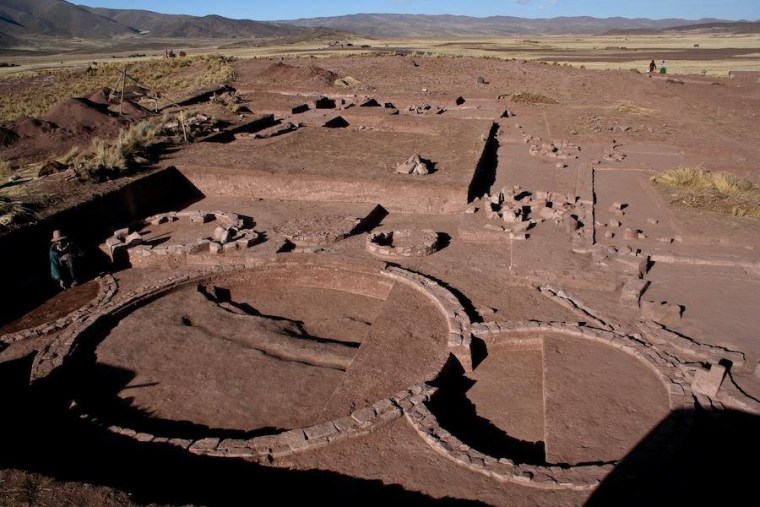At an ancient ritual complex in Bolivia, archaeologists discovered the ruins of a room where dead bodies were dissolved down to their bones in sizzling pots of caustic chemicals.
The researchers say people traveling in llama caravans may have brought their deceased relatives to be "defleshed" in this way at the complex, on purpose, so they could leave with the plaster-coated bones as relics.
Founded during the late first century, the site known as Khonkho Wankane was one of the smaller ceremonial centers to pop up in the Andes Mountains around Lake Titicaca before the rise of the more famous nearby ancient city of Tiwanaku. [8 Grisly Archaeological Discoveries]

At its height, Khonkho Wankane (sometimes spelled Qhunqhu Wankani) covered about 17 acres (7 hectares) with at least three sunken temples, several large platforms, a big central plaza and quite a few circular houses.
A team of excavators dug down inside one of these round structures between 2005 and 2007 and collected 972 bits of human bones — mostly small pieces from the feet, hands, teeth and kneecaps — from at least 25 different people. A thin coating of plaster covered the fragments, as well as several pottery vessels and llama-bone tools that were found in the room. There were also soft, chalky, white blocks of calcium oxide.
"It was such an odd assemblage of material that it really got us thinking about what they were doing in this room," said Scott Smith, an archaeologist at Franklin & Marshall College.
The calcium oxide was a big hint. This material, also known as quicklime, becomes highly caustic and alkaline when it's mixed with water and heated up, Smith said.
"It can be used as a solvent to dissolve fats and tissue," Smith said. "My co-author has witnessed people using quicklime mixtures in Bolivia to remove fats from bones to make comparative collections for veterinary training."
The clues suggest that ritual specialists were processing dead bodies in this room at Khonkho Wankane. These specialists may have heated their caustic limewater mixture in pots to disarticulate and clean the bones of the deceased — and then send the bones home with the families of the dead.
This scenario could explain why mostly small bones were found at the site; people might have been more likely to take away their relatives' skulls, ribs and long bones from the limbs.
Smith and his colleagues published their findings in this month's issue of the journal Antiquity. The study was part of the Jach'a Machaca Archaeological Project, a collaborative effort involving Bolivian archaeologists, North American archaeologists and the indigenous Aymara community.
— Megan Gannon, LiveScience
This is a condensed version of a report from LiveScience. Read the full report. Follow Megan Gannon on Twitter. Follow LiveScience on Twitter, Facebook and Google+.